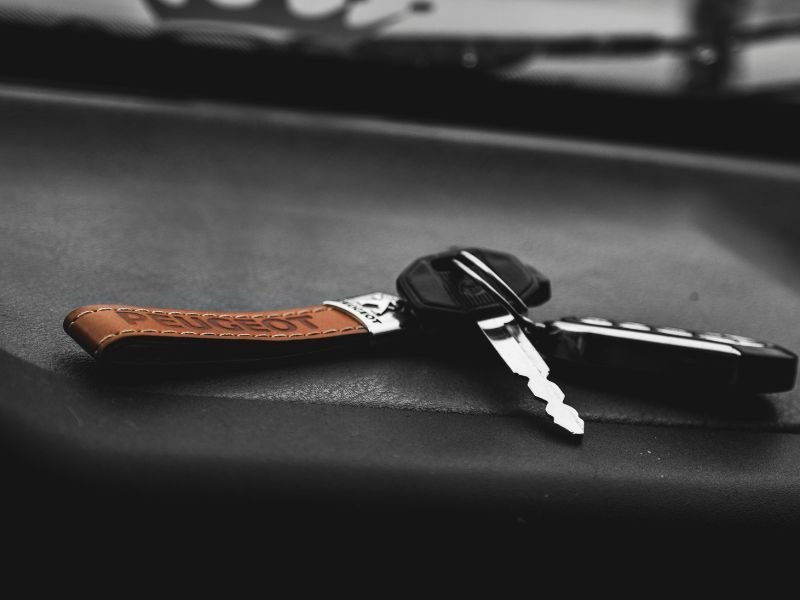When I bought my first car, I was honestly more excited about taking it on a road trip than worrying about what might happen if things went wrong. But as I quickly learned, car insurance isn’t just some boring paperwork—it’s a vital safety net. It protects me, my finances, and even other people if an accident occurs. In fact, it’s legally required in most places. Over time, I’ve realized that understanding car insurance isn’t just for the ultra-cautious; it’s for anyone who wants peace of mind on the road.
In this article, I’ll break down everything you need to know about insurance on cars. From the types of coverage available, to what influences the rates you pay, to smart ways to save money—consider this your practical guide to being a responsible (and well-protected) driver.
Types of Car Insurance Coverage
When I first started shopping for insurance, the number of options felt overwhelming. But once you understand the basic types, it’s much easier to pick what’s right for you. Here’s a clear look at the main kinds of coverage:
Liability Insurance
This is the foundation of almost every auto insurance policy—and for good reason. Liability insurance covers damages or injuries you cause to others in an accident. It’s usually split into two parts:
-
Bodily injury liability, which pays for the medical expenses of other people if you’re at fault.
-
Property damage liability, which covers repairs to another person’s vehicle or property.
Most states in the U.S. require drivers to carry liability insurance at minimum.
Collision Insurance
This pays to repair or replace your own car if it’s damaged in an accident, regardless of who caused it. For example, if I hit a tree or another car, collision insurance would help cover the costs to fix my vehicle. It’s especially valuable if you have a newer or higher-value car.
Comprehensive Insurance
Sometimes bad things happen that don’t involve a crash. Comprehensive insurance protects your car from non-collision events like theft, vandalism, fire, or damage from storms. When my neighbor’s tree branch fell on my car during a storm last year, my comprehensive coverage was a financial lifesaver.
Personal Injury Protection (PIP)
Not every state requires PIP, but it’s very helpful. It pays for medical expenses (and sometimes lost wages) for you and your passengers after an accident, no matter who was at fault. It’s especially common in “no-fault” insurance states.
Uninsured and Underinsured Motorist Coverage
Despite legal requirements, not everyone on the road has insurance. If you’re hit by someone who doesn’t have coverage—or doesn’t have enough—this part of your policy helps pay for your injuries or car repairs.
Optional Coverages
Many insurers offer extra features. Roadside assistance, rental car reimbursement, and gap insurance (which covers the difference if your car is totaled and you owe more than it’s worth) can all add an extra layer of protection.
Factors That Affect Car Insurance Rates
One question I often get from friends is: “Why do my rates seem so different from yours?” The truth is, insurance premiums are calculated based on a complex mix of factors. Understanding what goes into it can help you manage costs—and avoid surprises.
Driving Record
Probably the biggest influence is your driving history. If you have speeding tickets or accidents, insurers see you as a higher risk and raise your rates. A clean driving record, on the other hand, often earns you a nice discount.
Age and Gender
Younger drivers, especially teenagers, tend to pay more because they’re statistically more likely to be involved in accidents. Gender can also play a role; for example, young men generally have higher premiums than young women.
Type of Car
Insurers look closely at what you drive. A luxury sports car costs more to insure than a modest sedan because it’s more expensive to repair or replace—and sometimes more tempting to thieves. Safety ratings matter too; cars with better crash protection can mean lower premiums.
Location
Where you live impacts your rates more than you might expect. Urban areas often have higher rates because of increased traffic congestion and theft risk. Even weather patterns matter—if you live somewhere prone to hail or floods, comprehensive coverage tends to cost more.
Usage and Mileage
If you commute long distances daily, you’re on the road more and statistically more likely to have an accident. Some insurers even offer low-mileage discounts if you drive under a certain number of miles per year.
Credit History
In many states, insurance companies use your credit score to help predict how likely you are to file a claim. Better credit can translate to better rates, though this practice is banned or limited in a few states.
Claims History
If you’ve filed multiple claims in recent years, insurers may see you as a higher risk and adjust your rates upward.
How to Choose the Right Car Insurance
When I was first shopping for car insurance, I made the mistake of looking only at the monthly premium. It’s tempting to just pick the cheapest option, but there’s so much more to consider. Here’s what I’ve learned about finding a policy that truly fits your needs.
Know Your Coverage Needs
The first step is figuring out how much protection you actually want. While every state has minimum liability requirements, that’s often not enough to fully protect your finances. If you have a newer car or a loan on it, your lender may require collision and comprehensive coverage.
I like to think of it this way: could I afford to replace or repair my car entirely out of pocket? If not, more robust coverage makes sense. Also, think about your assets. If you have a home or savings that could be targeted in a lawsuit, higher liability limits offer critical protection.
Compare Multiple Quotes
Never settle for the first policy you see. I use online tools to get quotes from at least three different insurers. It’s amazing how much the prices can vary for the same coverage levels. Look beyond the big national brands; sometimes regional companies offer excellent deals and great customer service.
Check Insurer Reviews & Ratings
I’ve learned the hard way that the cheapest insurance isn’t always the best when you actually need to file a claim. That’s why I always check customer reviews and financial strength ratings from agencies like AM Best or Standard & Poor’s. A company’s ability to pay claims matters a lot more than saving a few dollars a month.
Understand Deductibles
A deductible is what you pay out of pocket before your insurance kicks in. Higher deductibles usually mean lower monthly premiums, but more expenses if you have an accident. I try to find a balance—high enough to save on premiums, but not so high that it would be a financial burden if I needed to file a claim.
Ways to Lower Your Car Insurance Premium
Nobody likes paying more than they have to. Over the years, I’ve picked up several smart ways to trim car insurance costs without sacrificing important protection.
Bundle Policies
Many insurers offer significant discounts if you bundle your auto insurance with homeowners or renters insurance. It simplifies billing too—one company, one payment.
Take Advantage of Safe Driving Programs
A lot of companies now offer telematics or “usage-based” insurance programs. By installing a small device in your car or using a smartphone app, they can monitor your driving habits. When I enrolled, my cautious driving earned me a 20% discount.
Maintain Good Credit
In most states, insurers consider your credit score when setting rates. Keeping my credit healthy—paying bills on time and minimizing debt—not only helps with loans but also keeps my insurance premiums in check.
Increase Your Deductible
If you have some savings set aside, raising your deductible from, say, $500 to $1,000 can noticeably drop your premium. Just make sure you’d be comfortable paying that amount if you had to file a claim.
Ask About Discounts
Insurance companies offer tons of discounts: for having anti-theft devices, taking defensive driving courses, being a student with good grades, or even simply staying accident-free. I always make a point to ask what’s available—I’ve found discounts I wouldn’t have known about otherwise.
Shop Around Regularly
Your loyalty might not always pay off. I check new quotes every year or two, even if I’m happy with my current company. Sometimes switching providers can save hundreds without losing coverage quality.
Common Mistakes to Avoid
Even smart, careful people can slip up when it comes to car insurance. I’ve made a few of these errors myself, and hopefully sharing them helps you steer clear.
Underinsuring to Save Money
It’s tempting to opt for only the minimum liability required by law to keep costs down. But if you cause a serious accident, those minimums might not come close to covering the damages—leaving your personal assets at risk.
Forgetting to Update Your Policy
Life changes, and your insurance should keep up. When I moved to a different city, I forgot to notify my insurer right away. This could have led to denied claims if I’d needed to file one. Buying a new car, getting married, or even driving fewer miles all mean it’s time to update your policy.
Ignoring Exclusions and Limits
Every policy has fine print. Some exclude coverage for things like driving for ride-share apps or using your vehicle for deliveries. It’s also crucial to know your limits—what the maximum payouts are if something happens. I always take a few minutes to read these details to avoid nasty surprises later.
Failing to Document
In the event of an accident, having thorough documentation is key. Photos, witness statements, and police reports can make the claims process much smoother. I keep a simple accident checklist in my glove compartment so I don’t forget important steps if I’m ever in a stressful situation.
Filing a Car Insurance Claim
No one ever wants to be in an accident, but knowing exactly what to do if it happens can save a lot of stress—and even help your claim get processed faster. I’ve had to file a claim once after a minor fender-bender, and here’s what I learned from the experience.
Steps to Take Immediately After an Accident
First, make sure everyone is okay. Call emergency services if there are injuries. Then, move vehicles out of traffic if it’s safe to do so.
Next, exchange information with the other driver. This includes names, contact details, driver’s license numbers, license plate numbers, and insurance policy information.
It’s also smart to take lots of photos—of all vehicles involved, the surrounding area, and any visible damage. These pictures were extremely helpful when I submitted my claim.
If police respond, get the names and badge numbers of the officers and ask how to get a copy of the accident report.
Notify Your Insurance Company
I try to contact my insurer as soon as possible—usually within 24 hours. Many companies let you start the process online or through a mobile app. Give them a clear, honest account of what happened. They’ll guide you through the next steps, like arranging a vehicle inspection or getting an estimate for repairs.
What to Expect During the Claims Process
After you file, an adjuster will usually be assigned to your case. They might review the accident report, inspect your car, and talk to witnesses if needed. If everything checks out, they’ll approve the payout for repairs or replacement.
From my experience, keeping detailed records—including emails and call notes—can help if there’s any confusion later.
Tips to Speed Things Up
-
Respond quickly to any calls or requests from your insurer.
-
Submit all documents (photos, receipts, police report) promptly.
-
Be patient, but check in if things seem stalled.
Frequently Asked Questions
Over time, I’ve heard so many questions about car insurance. Here are some of the most common ones, along with straightforward answers.
Is car insurance mandatory in every state?
Almost every state requires at least liability insurance to drive legally. A few, like New Hampshire, don’t mandate insurance but do require you to prove you can pay for damages if you cause an accident. Regardless, driving uninsured is a huge financial gamble.
Does my policy cover rental cars?
It depends. Many personal auto policies extend to rental cars for personal use. However, this often doesn’t apply if you’re renting a vehicle for business. I always check my policy or call my agent before renting.
How long do accidents affect my premium?
Typically, at-fault accidents stay on your insurance record for three to five years. The exact impact varies by insurer and state. Practicing safe driving and avoiding additional claims can help your rates decrease over time.
What if someone else drives my car and gets in an accident?
Generally, insurance follows the car, not the driver. So if you give a friend permission to drive your vehicle and they crash, your insurance is usually on the hook first. But policies vary, so it’s good to check your specific wording.
Conclusion
I’ll be honest—I didn’t always see the value of spending money on car insurance. It felt like just another bill to pay. But after seeing accidents happen to friends and going through my own claim, I’ve come to realize that insurance is about protecting my future, not just my car.
By understanding the different types of coverage, knowing how rates are determined, and being smart about comparing policies, I’ve managed to secure solid protection without overpaying. I also sleep better at night knowing that if something does go wrong, I won’t face financial disaster.
I hope sharing what I’ve learned helps you feel more confident navigating your own insurance choices. After all, we can’t always prevent accidents, but we can prepare for them—and that’s a huge step toward driving with true peace of mind.







